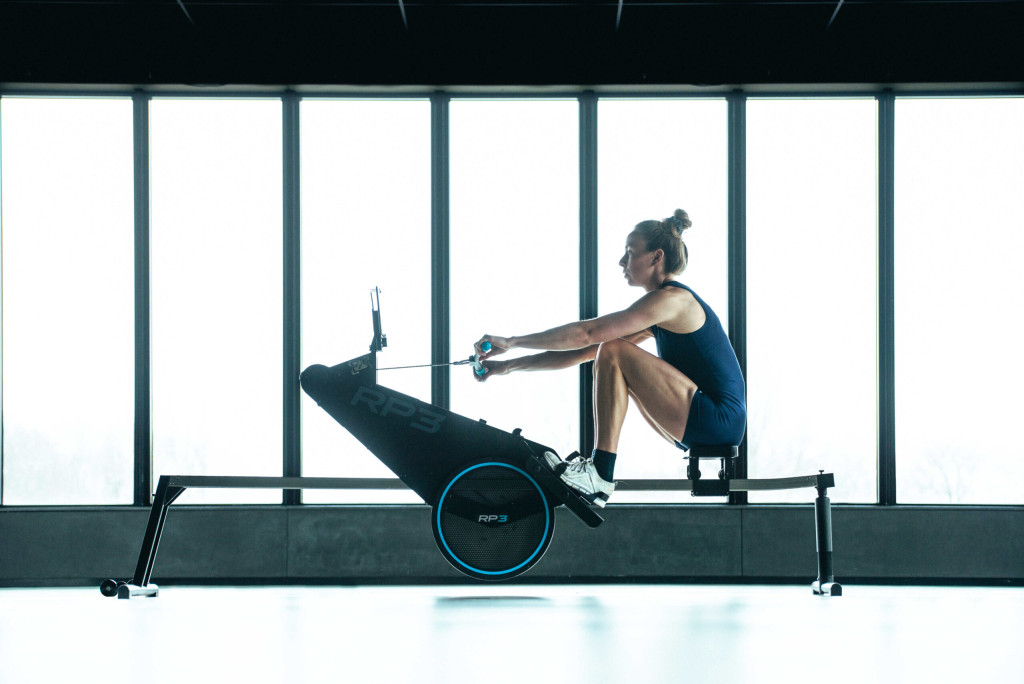Best low-impact cardio options for home
Discover 5 effective low-impact cardio options for home workouts that protect your joints while boosting fitness. Transform your health journey with these sustainable exercises for
Yes, rowing can effectively replace traditional split workout routines for most fitness enthusiasts. As a full-body exercise, a rowing session engages approximately 85% of your muscles while providing both cardiovascular conditioning and strength benefits simultaneously. Unlike split routines that divide muscle groups across different training days, rowing integrates multiple muscle groups in a coordinated, functional movement pattern. This makes it an excellent option for time-efficient, comprehensive training that can help you overcome common challenges in fitness and achieve balanced results with fewer weekly workout sessions. However, for optimal results, some supplementary exercises might be beneficial for muscle groups that rowing activates less intensively.
Split workouts and rowing represent fundamentally different approaches to fitness training. Traditional split routines divide your training by muscle groups across multiple days—perhaps legs on Monday, chest and triceps on Tuesday, back and biceps on Wednesday, and so on. This approach allows for targeted muscle development and recovery between sessions.
Rowing, in contrast, is a full-body, integrated movement that engages multiple muscle systems simultaneously. Rather than isolating muscle groups, rowing trains your body as a coordinated unit through a natural, fluid motion. Each stroke requires your legs, core, back, and arms to work together in a synchronized chain of power.
The philosophy behind rowing aligns more closely with functional fitness—training your body to work as an integrated system rather than as separate parts. This approach mimics how we naturally move in daily life and athletic activities, potentially leading to more balanced, applicable strength and endurance.
Dynamic rowing machines, which allow both the seat and the machine to move, further enhance this integrated approach by creating a more realistic rowing experience that engages stabilizing muscles throughout your body.
Rowing activates approximately 85% of your body’s muscles through a coordinated sequential movement that follows a specific biomechanical pattern. Understanding this sequence helps appreciate rowing’s comprehensive nature:
The rowing stroke begins with the drive phase, where your legs push powerfully as the primary movers—engaging your quadriceps, hamstrings, and glutes. As your legs approach full extension, your core and back muscles activate to maintain a strong position while transferring force. Your erector spinae, lats, and rhomboids engage as you pull with your arms, finally recruiting your biceps and rear deltoids at the finish.
During the recovery phase, this sequence reverses, with your body returning to the starting position in a controlled manner—still requiring muscle engagement throughout.
This coordinated chain of activation means rowing requires and develops:
This integration explains why rowing feels like a comprehensive workout—because it truly is engaging most major muscle groups with each stroke.
Yes, rowing uniquely delivers both strength and cardiovascular benefits simultaneously, making it a remarkably efficient exercise. The resistance component of rowing builds muscular strength and endurance, while the continuous nature of the movement elevates heart rate for cardiovascular conditioning.
The beauty of rowing lies in its adaptability. By adjusting your stroke rate, resistance level, and workout structure, you can emphasize different training goals:
For strength focus: Use higher resistance settings with lower stroke rates (18-24 strokes per minute), focusing on powerful drives and controlled technique. This approach increases the strength demand on your muscles, particularly in your legs and back.
For cardiovascular emphasis: Maintain moderate resistance with higher stroke rates (26-32 strokes per minute) for sustained periods. This elevates your heart rate into training zones that develop aerobic capacity.
For high-intensity interval training: Alternate between sprint efforts (32+ strokes per minute) and recovery periods to build anaerobic capacity while still developing strength.
Dynamic rowing machines enhance these benefits by more closely mimicking the actual rowing movement, requiring additional stabilization and engaging your body more comprehensively than static machines.
Transitioning from a split routine to a rowing-focused program requires strategic planning to ensure comprehensive fitness development. Here’s a balanced approach that captures the benefits of split training while harnessing rowing’s efficiency:
| Day | Workout Type | Focus | Sample Structure |
|---|---|---|---|
| Monday | Power Focus | Leg & Back Strength | 10-min warm-up, 6-8 intervals of 250m at high resistance, 3-min recovery between |
| Tuesday | Technique & Mobility | Form & Flexibility | 20-min steady-state rowing focusing on technique, followed by targeted mobility work |
| Wednesday | Endurance | Cardiovascular Development | 5-min warm-up, 30-45 min steady-state rowing at moderate intensity |
| Thursday | Rest/Active Recovery | Recovery & Regeneration | Light mobility work, walking, or other low-intensity activity |
| Friday | HIIT Session | Power & Anaerobic Capacity | 10-min warm-up, 10-12 intervals of 30-sec max effort with 90-sec recovery |
| Saturday | Long Row + Supplementary | Overall Conditioning + Targeted Work | 30-min steady row followed by supplementary exercises (push-ups, dips, etc.) |
| Sunday | Rest | Complete Recovery | Full rest or very light activity |
This structure incorporates varied intensity sessions, technique work, and even supplementary exercises to ensure all fitness components are addressed. The key is varying your rowing approach—changing resistance, duration, intensity, and interval structure—to target different energy systems and muscle recruitment patterns.
Remember to consult with your doctor before beginning any new exercise regimen, particularly when making significant changes to your training approach.
Transitioning from split workouts to rowing can dramatically improve your training time-efficiency in several measurable ways. Most notably, you’ll reduce your total weekly training time while potentially increasing your overall fitness results.
Split routines typically require 4-6 weekly sessions of 45-60 minutes each to target all major muscle groups adequately. In contrast, a comprehensive rowing program might involve just 3-4 sessions of 30-45 minutes to achieve comparable results. This represents a potential time savings of 2-3 hours weekly.
Additional efficiency benefits include:
For busy professionals, parents, or anyone with limited training time, this efficiency represents not just convenience but potentially better adherence to consistent exercise—one of the most critical factors for long-term fitness success.
While rowing is exceptionally comprehensive, it doesn’t engage all muscle groups with equal emphasis. The primary underemphasized areas include chest muscles (pectorals), certain shoulder movements (particularly lateral and front deltoids), and some specific arm actions.
Muscle groups that benefit from supplementary work include:
Fortunately, these limitations are easily addressed with 10-15 minutes of targeted exercises 2-3 times weekly. Simple bodyweight movements can be sufficient:
By adding these minimal supplementary exercises, you can create a truly comprehensive fitness program centered around rowing while addressing any potential muscular imbalances.
When transitioning from split routines to rowing-focused training, you’ll likely experience a distinct adaptation period followed by noticeable changes in your fitness profile. Understanding these changes helps set realistic expectations.
Initially (2-4 weeks), you may experience:
As you adapt (1-3 months), expect:
Long-term benefits (3+ months) typically include:
For optimal results, using a dynamic rowing machine rather than a static model provides a more natural movement pattern that better translates to functional strength and reduces stress on your joints, particularly your lower back.
At RP3 Rowing, we’ve designed our dynamic rowing machines specifically to deliver these benefits while providing a more realistic rowing experience. Our models move with you, creating a smoother, more effective stroke that maximizes your fitness results while minimizing injury risk. Understanding the science of rowing has enabled us to develop equipment that truly supports your fitness journey. Always consult with a healthcare professional before beginning any new exercise program to ensure it’s appropriate for your individual needs.
If you’re interested in learning more about the benefits of rowing, reach out to our team of experts today.
Discover 5 effective low-impact cardio options for home workouts that protect your joints while boosting fitness. Transform your health journey with these sustainable exercises for
Discover 5 effective low-impact exercises that protect your back while maintaining fitness intensity. Learn proper form techniques to strengthen your spine without risking injury.
Discover 5 effective home workouts that build strength without stressing your joints. Learn fluid movement techniques for pain-free exercise that delivers results while protecting your
Discover effective low-impact fitness strategies that build strength and cardio health without damaging your joints. Learn sustainable workout techniques for long-term health and injury prevention.
Discover 5 effective full-body low-impact workouts perfect for beginners that protect your joints while building strength and fitness. Start your sustainable exercise journey today!
Discover how low-impact fitness creates sustainable health benefits without joint pain. Learn 5 full-body workouts that deliver results while preserving your body for decades of
Discover why low-impact workouts deliver powerful fitness results without joint damage. Learn 6 key benefits and find the perfect exercise for sustainable daily fitness that
Discover why low-impact training on recovery days accelerates muscle repair, prevents injuries, and boosts long-term fitness gains. Learn optimal activities and avoid common recovery mistakes.
Discover why rowing machines deliver a complete workout while protecting your joints. Engage 85% of your muscles with zero impact stress—perfect for fitness enthusiasts of
Discover effective low-impact exercises perfect for returning to fitness after breaks or injuries. Learn 5 joint-friendly workouts that rebuild strength while preventing setbacks on your
Discover how rowing uniquely engages 85% of your muscles while enhancing flexibility in one efficient workout. Build strength and mobility simultaneously without stressing your joints.
Discover 5 low-impact routines that challenge your entire body without stressing your joints. Build strength and burn calories while protecting your knees, hips, and spine.
Discover how consistent low-impact activity delivers powerful physical and mental benefits without joint stress. Build fitness, reduce stress, and improve mobility through sustainable daily movement
Discover why rowing machines offer the ultimate low-impact, full-body workout for home fitness. Get 85% muscle engagement with minimal joint stress—perfect for all ages and
Discover how low-impact exercise protects your joints while delivering powerful fitness results. Learn 5 joint-friendly workouts that maintain mobility and prevent pain as you age.
Discover how to build sustainable low-impact fitness habits that protect your joints while delivering exceptional results. Learn proven strategies for lifelong exercise consistency without pain.

We will send you a personal quote as soon as possible.
As soon as the quote is ready, you will receive a link by email to order directly.
